Part 1: The Siskiyou Crest
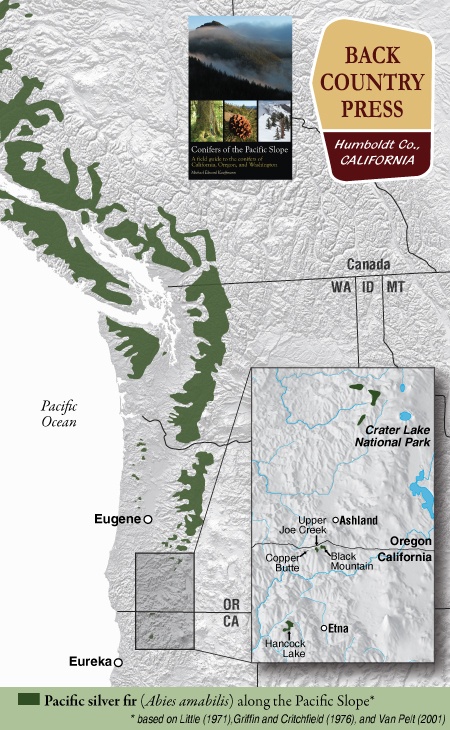
In conjunction with the Klamath National Forest and the California Native Plant Society Vegetation Team, I began a mapping and inventory project for Pacific silver fir (Abies amabilis) in California. The first part of this project was along the Siskiyou Crest, near the Oregon-California border. Later this summer I will visit the other population in the Marble Mountain Wilderness.
Pacific silver fir in California can easily be overlooked because of its similarity to white fir (Abies concolor). Upon close inspection (and by going to specific locations) the differences will become apparent. Silver fir is identifiable in the hand because it has the most distinct and exuberant stomatal bloom of any regional tree. Like grand fir (and regionally white fir) the tips of the needles are notched. The needles splay from the branch on only one side often in a perfect arrays, fanning out in a semi-circular manner. The needles occasionally twist in this array, thus offering distinct silver flashes of the stomatal bloom on the undersides—a brilliant contrast to the dark-green upper surfaces. This is also what sets it apart from white fir, with a duller stomatal bloom. As with other Abies, the smell of crushed needles emits a resinous “pine scent.” The bark is distinct, forming long, narrow, rectangular blocking patterns that seem to melt off the trunks in silvery chunks with subtle reddish hues in the furrows. At a distance, larger trees are gradually tapered, similar to Shasta fir (Abies magnifica var. shastensis). It is an inimitable and rare experience to spend time with this beauty in the Klamath Mountains
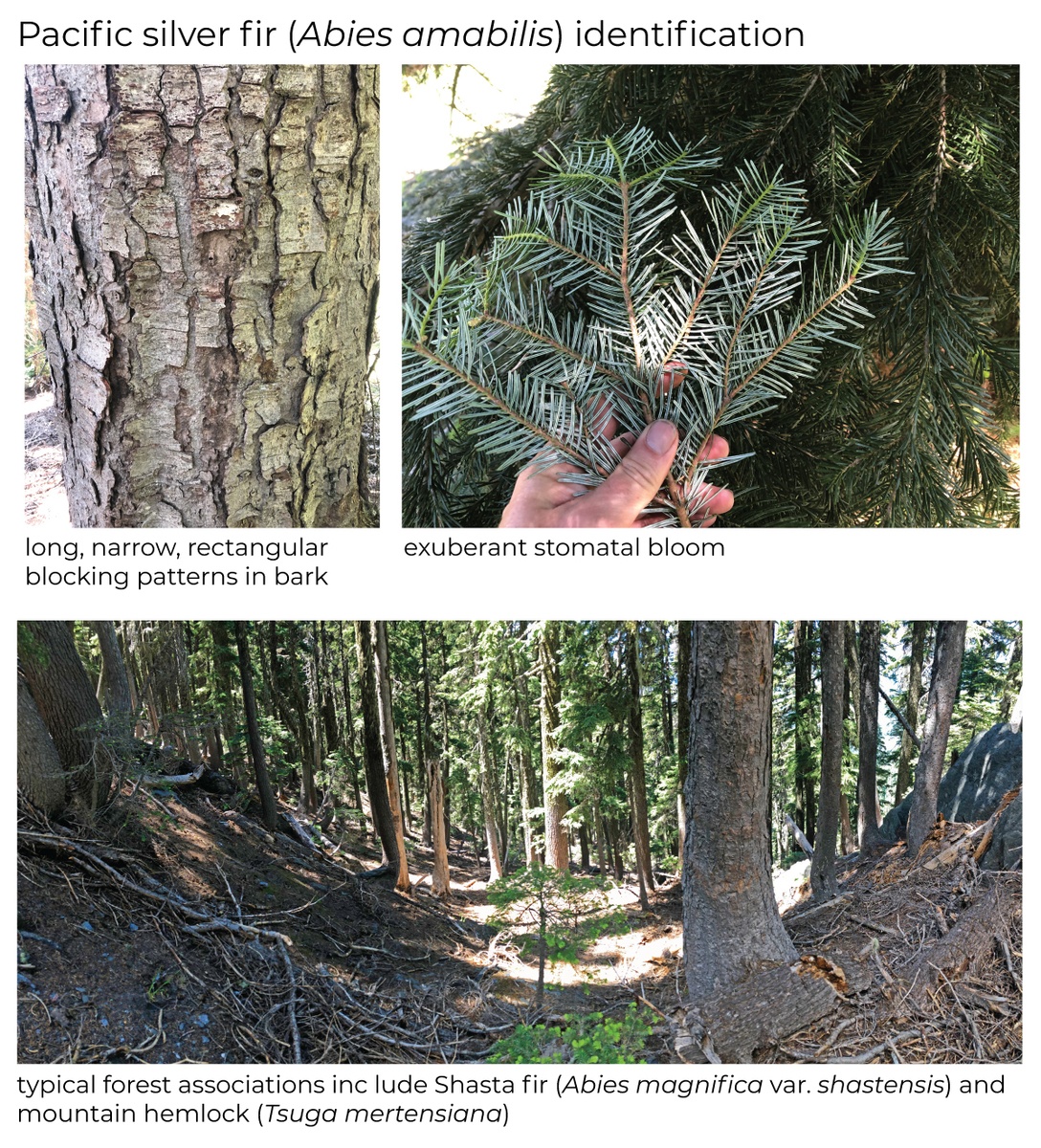
Mapping and inventory project
My first trip to map and inventory the species was to the Siskiyou Crest along the Pacific Crest Trail north of Cook and Green Pass. This area has long been considered a botanical wonderland with hundreds of vascular plant species, both common and rare, inhabiting the region. Botanists from around the world travel to Cook and Green Pass to explore in either direction. For this survey, I headed north on the PCT to find the stands.

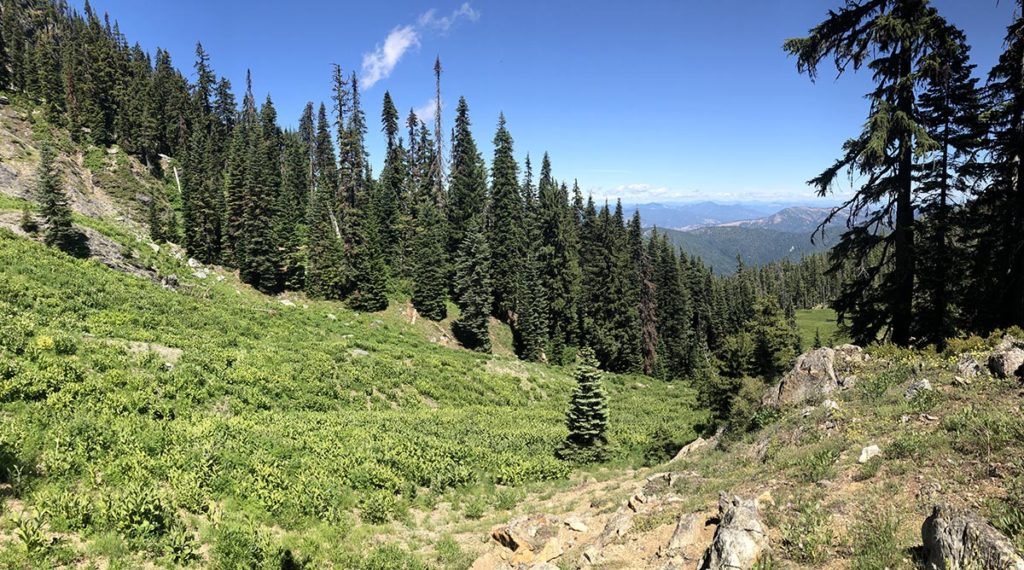
Dense stand of Pacific silver fir adjacent to a meadow, below Black Butte. 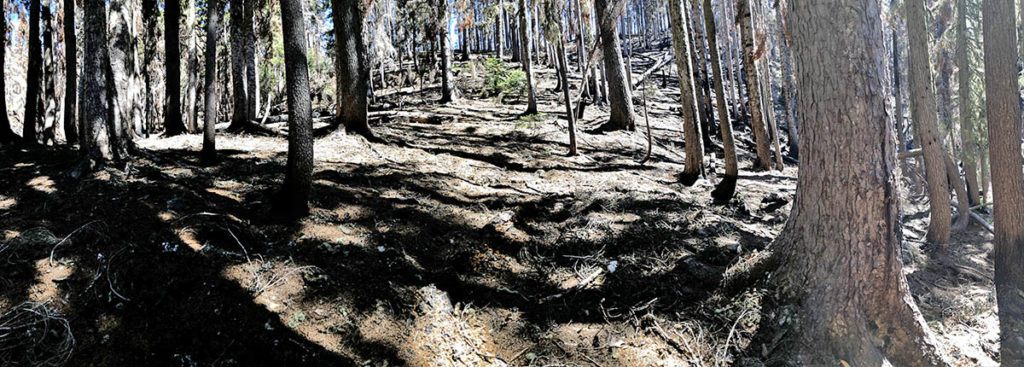
Aftermath of the Abney Fire. 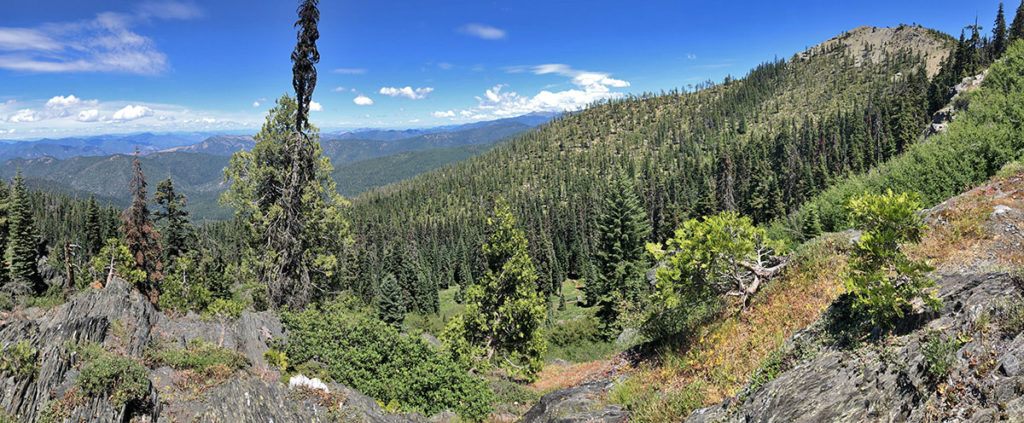
Pacific silver fir decorate the rocky ridges below Black Butte on the Siskiyou Crest 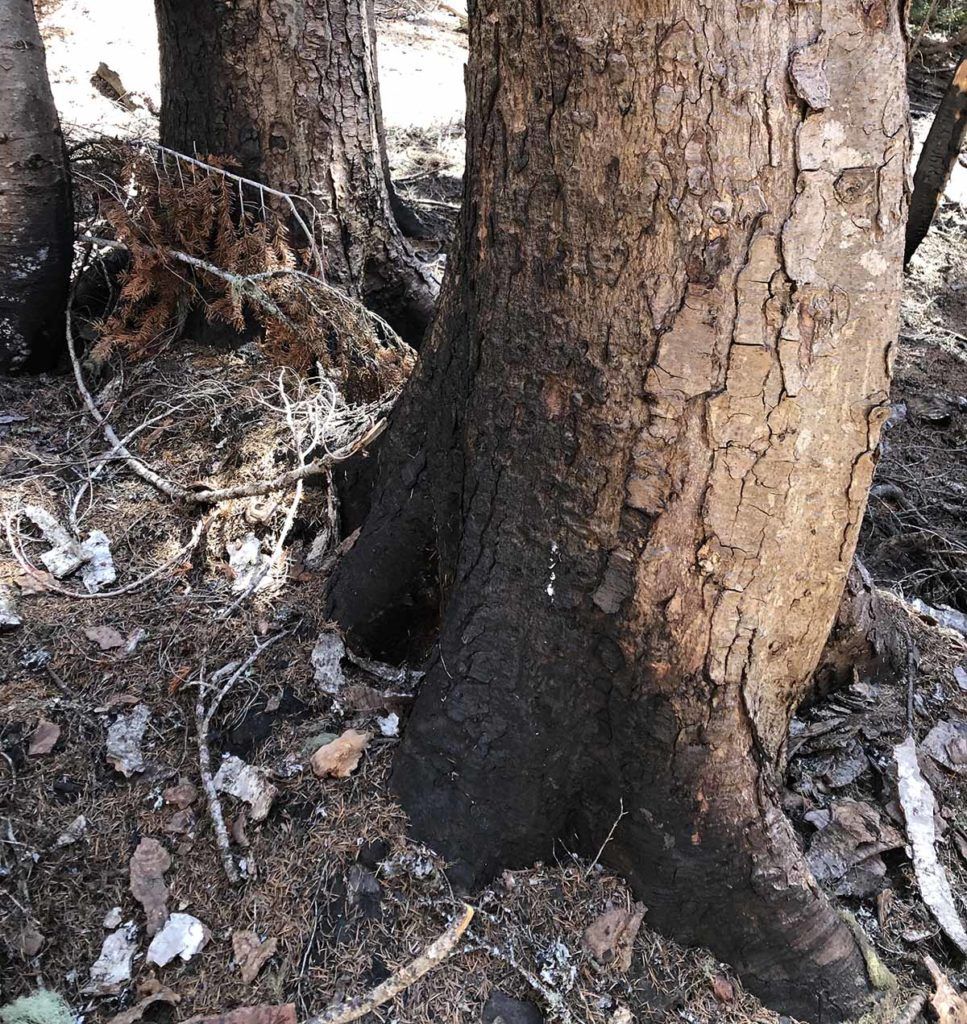
Fire scars from the 2017 Abney Fire have caused high mortality in Upper Joe Creek.
Forest Health Summary
In general, I found that the large stand below Black Butte is doing well. There are issues with fir engraver beetles (Scolylus ventralis) which are also affecting the Shasta fir in the stand. Mortality here is approaching 10% due to the engraver beetle. I also found evidence of at least one of three other pathogens that use silver fir as a host. These pests include the native western spruce budworm (Choristeneura occidentalis) and Douglas-fir tussock moth (Orygia pseudotsugata) and even possibly the balsam woolly aphid (Adelges piceae). Notice the branch tip swelling in the PEST image below.
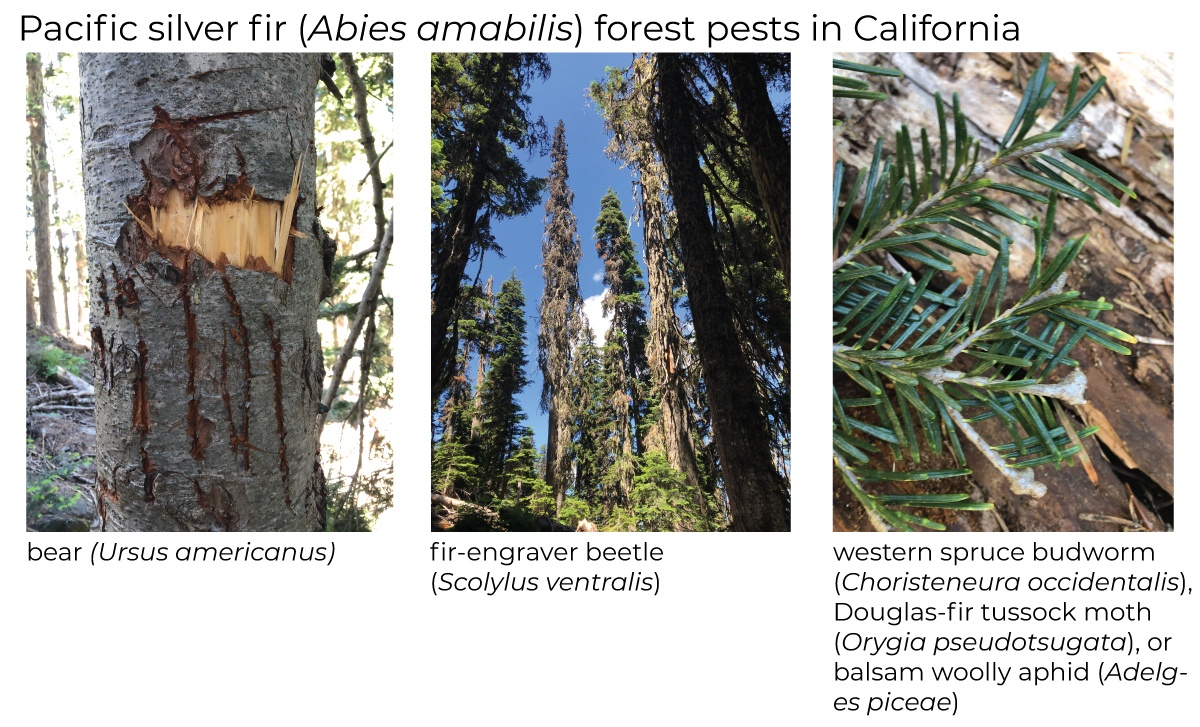
In Upper Joe Creek, the Abney Fire ravaged through the stand with high severity. In the worst hit areas there was 100% mortality with an average across the upper reaches of the headwaters approaching 50%. According to Luke Ruediger, who has walked through the lower parts of the silver fir stand, mortality is much lower.
- iNaturalist Observations (July 10th, 2019)
- eBird List (July 10th, 2019)
Finding the Pacific silver fir – from Conifer Country
Getting there: from Highway 96 in the town of Horse Creek, travel north over the Chester Barton Memorial Bridge, on 46N50, for 2.2 miles—where you will see the sign for Forest Route 12 on the right. From here it is worth a side trip up 46N50 another 1.7 miles to the Horse Creek Botanical Area. To continue to White Mountain, take a right on Route 12, following this well signed road through several junctions, for 9.6 miles to a 4-way junction. Take a left following the sign to Siskiyou Summit on 47N63 for another 3.5 miles to a sharp switchback on the ridge. There is parking for a few vehicles just past Reeves Ranch Spring, where good water is available. At the switchback the road becomes 47N81. Traveling east, a network of roads will eventually take you all the way to Interstate 5. A great camping spot can be had at Alex Hole, 2 miles east on 47N81; watch for elk, common juniper, and views into the Applegate Valley.
Why go? To enjoy the Pacific silver fir and the other botanical rarities within the White Mountain Botanical Area…and the view from the top of White Mountain. This is a marvelous out-and-back hike on the Pacific Crest Trail along the Siskiyou Crest. You could continue the hike to the Slaughterhouse Flat area (for more Pacific silver fir), to Cook and Green Pass—or even Mexico if you have the time! With a brief stop along Horse Creek, on your way up from Highway 96, you can observe 12 species of conifers.

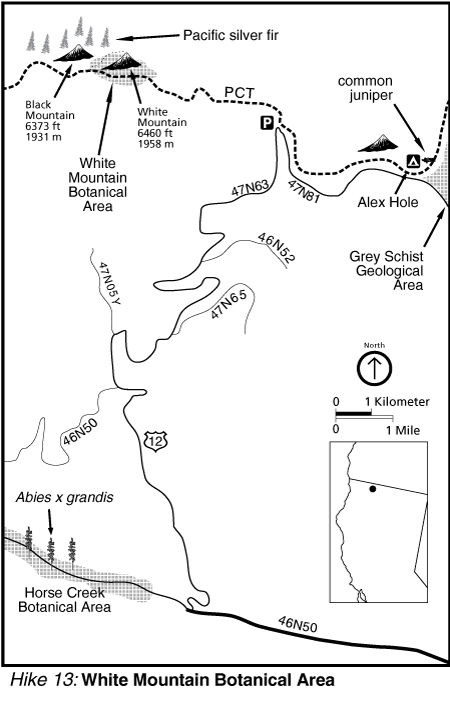
Kudos to you, Michael, for doing this inventory of Pacific silver fir. I visited Hancock Lake, per Conifer Country, in 2015, loved the trees, and was fortunate to have a whole peninsula to myself on July 4. A few of the photos are on my website, http://www.coniferous.site, which I’m revising, as early on I had some incorrect information about other gymnosperms which were not conifers. Fixing that now, and hope to have several more species this summer.
Just returned from trip in the Marble Mountains, Man Eaten Lake, Sky High Lakes, and Marble Gap. I found the subalpine firs at Sky High Lakes to be astonishing. The whole grove of them! Lots of pups too. Couldn’t believe this robust colony was really subalpine fir until I noticed that the bark was gray, smooth, and full of resin blisters. I expected them to be narrower.
Met someone who had just attended a Bigfoot Alliance trip to Yolla Bollys and loved it.
Should you or another expert ever be giving a field seminar on firs, I would love to attend. Keep up the great work!
Emerald- Great to hear from you! I am glad you are finding time for these grand adventures in Conifer Country. Thanks for sharing your website too, it is becoming a great resource.
Beautiful places! I am so glad that I have purchased a horse ranch nearby and on the way to it I often stop here to enjoy the scenery!